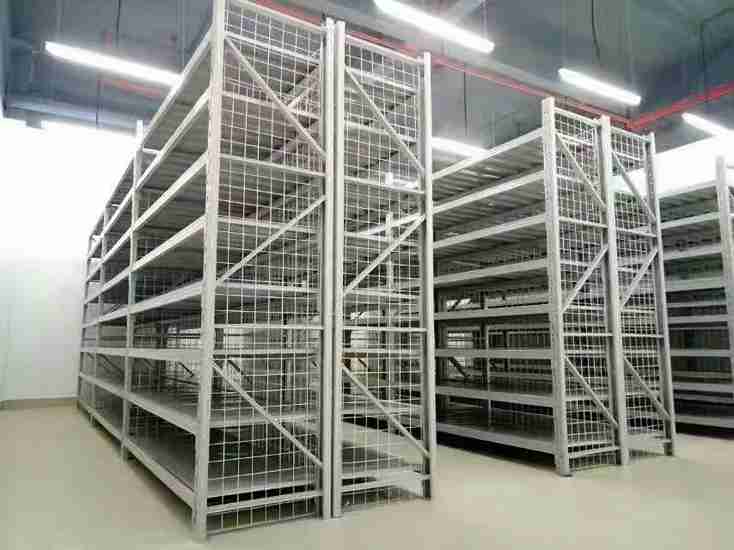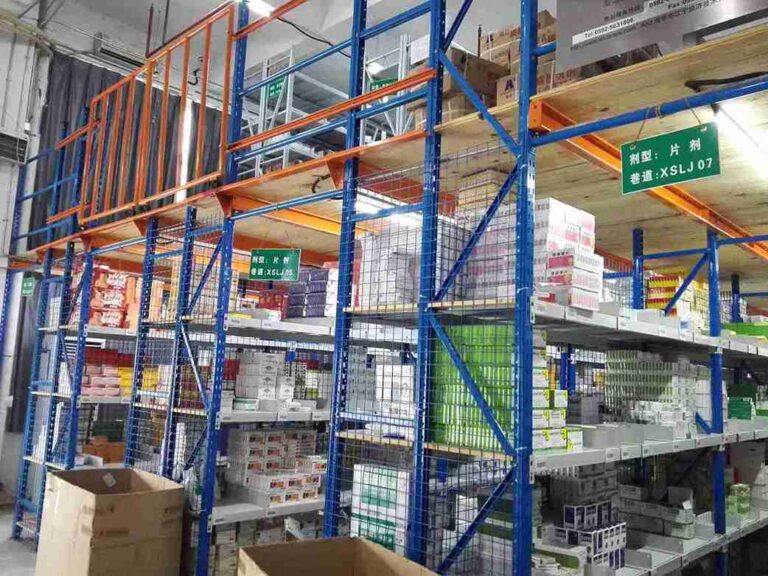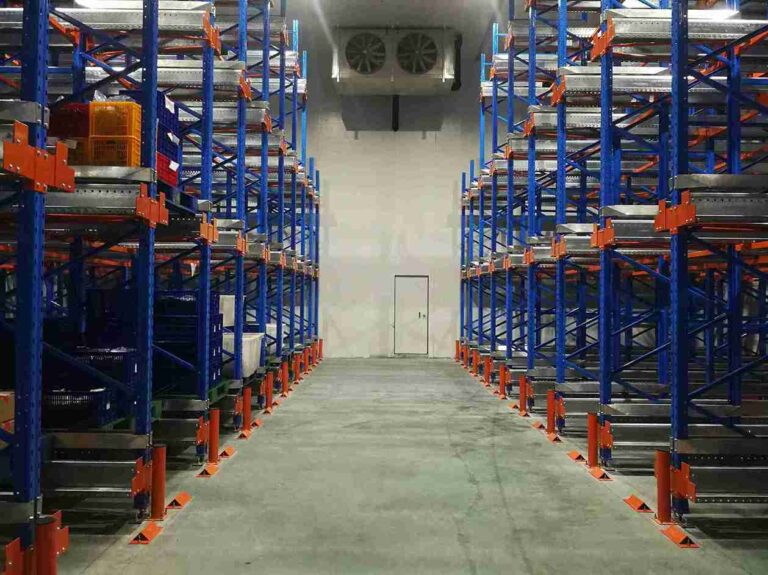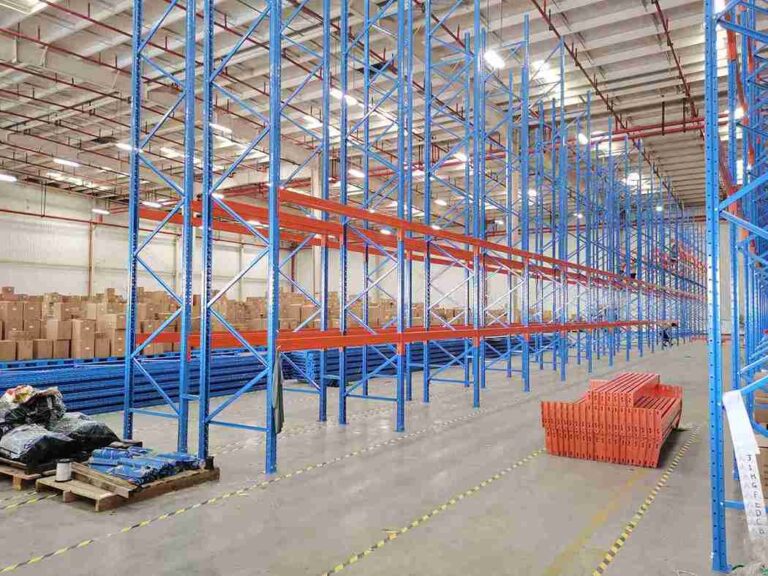📐 "First 50 Enterprise Queries Get Custom 3D Warehouse Design" Plan

In the high-stakes arena of modern logistics, the conversation around automation is dominated by the agility of Autonomous Guided Vehicles (AGVs) and the intelligence of warehouse management software. However, a critical, and often underestimated, component forms the very foundation upon which automated success is built: the storage infrastructure. Specifically, the integration of precision-engineered adjustable shelving units is what separates a merely automated facility from a truly resilient, efficient, and future-proof operation.
This deep-dive analysis moves beyond superficial features to explore the engineering principles, strategic advantages, and operational protocols that define high-performance adjustable shelving units within automated ecosystems. For logistics managers, warehouse designers, and operations directors, understanding this synergy is not optional—it is fundamental to capitalizing on automation investments and achieving a dominant competitive edge.

(H2) The Precision Dialogue: How AGVs and Adjustable Shelving Units Communicate
The interaction between an AGV and a storage location is a complex, millimeter-precise operation. Standard, static shelving introduces uncertainty and friction into this process. In contrast, AGV-optimized adjustable shelving units are designed from the ground up to facilitate a flawless dialogue with robotic systems. This dialogue hinges on several non-negotiable engineering criteria that standard adjustable shelving units may lack.
(H3) Dimensional Stability and Robotic Precision
The absolute positional accuracy of AGVs is useless if the storage structure itself is variable. Industrial-grade adjustable shelving units intended for automation are manufactured with tolerances that are orders of magnitude tighter than their conventional counterparts. The upright frames are laser-cut and formed from high-tensile steel, ensuring perfect plumb.
The beam connector holes are punched with a consistency that guarantees every shelf level is perfectly level and at its designated height. This dimensional stability is paramount because AGVs rely on environmental predictability for their LIDAR, vision, or gyroscopic navigation systems. A bay of adjustable shelving units that is even slightly out of square can scatter sensor signals, leading to navigation errors, aborted missions, or, in the worst case, a collision that damages both the robot and the inventory.
(H3) The Interface of Access: Beam and Decking Design
The point of physical exchange—where the AGV’s forks or manipulator arms interact with the storage system—is the most critical interface. The design of beams on automation-ready adjustable shelving units is radically different. They feature a low-profile, high-strength design that maximizes the clear opening for automated retrieval. The locking mechanism is equally crucial.
Lever-actuated or cam-style connectors provide a positive, audible lock into the upright, eliminating any beam wobble that could disrupt a delicate robotic retrieval sequence. Decking on these specialized adjustable shelving units is also engineered for automation; whether wire mesh or solid, it is securely fastened and perfectly flat, preventing any edge that could snag a load or interfere with a sensor.
(H3) The Data Connection: Shelving as an Active Component
The next evolution of adjustable shelving units involves moving from a passive storage medium to an active participant in the data ecosystem. This can be achieved through integrated features like standardized mounting points for fiduciary markers (used by AGVs for visual calibration) or embedded RFID tags on the uprights. This allows an AGV to not only navigate to a location but to perform a final confirmation check, verifying “I am at the correct bay of adjustable shelving units” before executing a costly and potentially hazardous deposit command. This level of integration transforms the adjustable shelving units from simple furniture into a smart component of the material handling system.
(H2) The Compounding Returns of a Fully Synchronized System
Investing in automation-grade adjustable shelving units is not a mere expense; it is a strategic lever that delivers compounding returns across every key performance indicator. The benefits extend far beyond simple storage.
(H3) Throughput Acceleration via Predictable Environments
In automation, speed is a function of predictability. When AGVs operate in an environment built with precision adjustable shelving units, they can execute their tasks with unwavering confidence. The vehicles can be programmed to operate at their optimal speeds, with aggressive acceleration and deceleration profiles, because the system knows the exact dimensions and layout of every storage location. This shaves seconds off every single cycle. Multiplied across thousands of cycles per day, the result is a dramatic and measurable increase in overall system throughput that static shelving cannot hope to match.
(H3) Dynamic Storage Density and Cube Utilization
Static storage creates permanent voids of wasted space. The fundamental advantage of adjustable shelving units is their inherent flexibility. When integrated with a smart WMS, this flexibility becomes a dynamic optimization tool. The system can continuously analyze SKU dimensions and turnover rates, then recommend or even direct the physical reconfiguration of the adjustable shelving units to match the current inventory profile. This data-driven approach to space management eliminates wasted vertical air-gap, pushing storage density to its practical maximum and postponing the multi-million-dollar capital project of building a new warehouse.
(H3) Inherent Future-Proofing Against Market Volatility
The only constant in logistics is change. Product lines are discontinued, new SKUs are introduced, and packaging is redesigned. A static storage system turns these routine business events into protracted, disruptive, and expensive re-fit projects. A warehouse equipped with robust adjustable shelving units treats change as a simple configuration update. A bay of adjustable shelving units storing tall pallets of paper goods one week can be rapidly reconfigured the next week to store multiple levels of smaller totes for e-commerce fulfillment. This operational resilience is a powerful competitive weapon, enabling companies to adapt to market shifts with agility and minimal cost.
(H2) Deconstructing Automation-Grade Adjustable Shelving Units
The term “adjustable shelving” encompasses a vast spectrum of products. The systems required to withstand the rigors of 24/7 automated operations represent the pinnacle of this product category.
(H3) The Upright Frame: The Unforgiving Backbone
The upright frame is the foundational element that dictates the entire system’s stability. For automation, these are not simple C-channel columns. They are often robust, box-style or structural tear-drop profiles made from high-grade, cold-rolled steel. The punching pattern for the beam connections is not an afterthought; it is engineered to provide fine-increment adjustability (e.g., every 1-2 inches) while maintaining the structural integrity of the upright. The finish is a durable, powder-coated layer resistant to chipping from incidental contact, as metal debris from a chipped upright can be catastrophic for sensitive AGV components.
(H3) Beams and Connectors: The Heart of the Adjustable Mechanism
The beam and connector system is where the “adjustable” promise is either fulfilled or broken. For automation, the connector must achieve two things: it must be easy for humans or automated tools to engage, and it must create a rock-solid, zero-movement connection once locked. Pin-and-clip systems common in lighter-duty adjustable shelving units are insufficient. The industry standard for heavy-duty, automated applications is a positive-locking cam or lever mechanism. This ensures that the immense dynamic forces imparted by a heavily-laden AGV will not cause the beam to gradually work itself loose over time, a critical safety and performance consideration.
(H3) Decking, Accessories, and the Load-Bearing Surface
The choice of decking must be a deliberate decision based on the application. Wire mesh decking offers ventilation and allows for sprinkler water passage, but its grid must be small enough to support the smallest items in the inventory. Solid steel decking provides a supremely flat and strong surface but adds weight and cost. For high-volume case picking, adjustable shelving units can be fitted with carton flow rails, creating dynamic picking faces. The key is that all accessories must be designed with a flush-mount philosophy, ensuring no protruding elements exist to create a snag point for automation.
(H2) The Integration Blueprint: Weaving Adjustable Shelving Units into the Automated Fabric
Deploying AGV-optimized adjustable shelving units is a multidisciplinary process that requires meticulous planning. Success is found at the intersection of physical infrastructure, software, and process.
(H3) The Digital Twin: De-Risking Through Virtual Commissioning
Before a single component is shipped, a world-class provider will collaborate to create a digital twin—a perfect 3D model of the proposed layout of adjustable shelving units. This model is imported into the AGV system’s simulation software. This powerful step allows for:
-
Pathfinding and Traffic Flow Analysis: Engineers can simulate AGV traffic to identify and eliminate potential congestion points, ensuring the aisles between adjustable shelving units are optimally sized.
-
Cycle Time Validation: The system can run through millions of simulated transactions to provide a highly accurate prediction of throughput, validating the ROI model before capital is spent.
-
Collision and Interference Checking: The software can identify any physical conflicts between the AGV’s envelope and the adjustable shelving units, beams, or decking, allowing for corrections in the virtual stage where they are cost-free.
(H3) The Software Handshake: WMS, WCS, and the Storage Map
The intelligence of an automated warehouse hinges on the seamless flow of data between the Warehouse Management System (WMS), the Warehouse Control System (WCS), and the physical storage map. The WMS, which contains the master record of every item and its location, must have an accurate, real-time database of the configuration of every single bay of adjustable shelving units. When a shelf level is adjusted, the WMS must be updated instantaneously. A failure in this data integrity—sending an AGV to a shelf level that no longer exists, for example—can bring the entire automated system to a grinding halt. This necessitates robust “Management of Change” protocols that link physical adjustments to digital updates.
(H2) Operational Scenarios: Adjustable Shelving Units in Action
The theoretical benefits of adjustable shelving units are best understood through their application in real-world automated scenarios.
(H3) High-Velocity E-Fulfillment and Goods-to-Person Systems
In a state-of-the-art e-fulfillment center, AGVs often operate in a “goods-to-person” model, moving entire pods of adjustable shelving units to stationary pick stations. Within these pods, the adjustable shelving units are the critical element. Their configurability allows the operator’s pick face to be ergonomically optimized for the specific mix of items being picked from that pod. The AGVs, synchronized with the WMS, know the exact weight and dimensions of each pod, ensuring efficient and safe transport. The adjustable shelving units in this context are the canvas upon which efficient picking is painted.
(H3) Flexible Buffer Storage in Manufacturing and Assembly
In a Just-In-Time (JIT) or lean manufacturing environment, AGVs are used to deliver components to the line side. The buffer storage at the point of use must be as flexible as the production schedule itself. Here, heavy-duty adjustable shelving units provide the answer. One day, they may be configured for large, bulky raw materials; the next, they can be adjusted to store small, kanban-controlled bins of high-value components. The AGVs are simply reprogrammed with new fork heights and approach paths, a process managed by the central control system that is aware of the new configuration of the adjustable shelving units.
(H2) The Due Diligence Checklist: Selecting Automation-Grade Adjustable Shelving Units
Choosing the right adjustable shelving units for an automated warehouse is a high-stakes technical decision. This checklist provides a framework for evaluation.
-
Certified Load Capacity Data: Insist on seeing third-party certified load capacity charts that detail both uniformly distributed and concentrated load ratings for the adjustable shelving units. Do not rely on manufacturer’s stated values without certification.
-
Tolerance Specifications: Request the manufacturer’s engineering specifications for dimensional tolerances (e.g., upright plumbness, beam levelness). For automation, these should be explicitly stated and verifiable.
-
Beam Locking Mechanism Demonstration: Demand a physical sample. Test the beam connection yourself. It should engage smoothly and lock with a definitive, positive action that eliminates all play.
-
Finish and Durability Testing: Inquire about the specific powder-coating process and its durability ratings (e.g., salt spray test hours). A robust finish is essential for longevity and for maintaining a low-friction environment for AGVs.
-
Proven Automation Integration Portfolio: Ask the provider for detailed case studies and contactable references from other automated warehouse projects. A proven partner will speak knowledgeably about WMS integration, digital twins, and AGV interface challenges.
(H2) The Horizon: The Evolution Towards Adaptive, Smart Shelving Units
The trajectory of innovation points toward an even deeper integration of intelligence and physical storage. The next generation of adjustable shelving units may feature:
-
Integrated Load Sensing: Each beam level in the adjustable shelving units could be equipped with strain gauges, providing real-time weight data to the WMS for perpetual inventory counting.
-
Dynamic Location Identification: The adjustable shelving units themselves could broadcast their location and configuration via embedded Bluetooth beacons or RFID, simplifying installation and ongoing management.
-
Automated Reconfiguration: In highly advanced scenarios, the potential exists for robotic mechanisms to physically adjust the shelf heights on the adjustable shelving units autonomously, based on commands from the WMS, creating a truly self-optimizing storage system.
Investing in today’s automation-grade adjustable shelving units is the essential first step toward this smart future, ensuring that the storage infrastructure is not the bottleneck when these technologies become commercially viable.
(H2) Conclusion: The Strategic Foundation of Automated Success
The pursuit of warehouse automation is a complex journey of integrating moving parts, sophisticated software, and human expertise. However, this journey will be compromised if it is built upon an inflexible, static foundation. AGV-optimized adjustable shelving units represent more than just storage; they are the strategic, dynamic partner that unlocks the full potential, resilience, and financial return of an automation investment.
They provide the certainty that the robotic fleet requires, the flexibility that business demands, and the data-ready platform that the future will be built upon. For any organization serious about achieving a lasting advantage in the logistics arena, the specification of precision-engineered adjustable shelving units is not a detail—it is a decisive strategic imperative.
Frequently Asked Questions (FAQs)
1. What specific structural reinforcements differentiate automation-grade adjustable shelving units from standard models?
Automation-grade adjustable shelving units often feature heavier-gauge steel, particularly in the upright frames which may use a box-section or structural tear-drop design for superior torsional rigidity. The beam connectors are engineered with larger bearing surfaces and more robust locking cams to withstand the constant dynamic loads and micro-vibrations imposed by AGVs, which far exceed the static loads of traditional use.
2. How does the total cost of ownership (TCO) for automation-ready adjustable shelving units justify the higher initial investment?
The TCO analysis must factor in avoided future costs. While the initial outlay is higher, automation-ready adjustable shelving units save substantial costs by: eliminating the need for complete system replacement during product mix changes; reducing downtime for reconfiguration from weeks to hours; minimizing product loss from damage caused by unstable storage; and maximizing the ROI of the AGVs themselves by allowing them to operate at peak efficiency.
3. In a live warehouse environment, what is the practical protocol for safely reconfiguring adjustable shelving units without disrupting AGV operations?
The safest protocol involves a “lock-out, tag-out” procedure for a specific zone. The WMS is used to designate a section of adjustable shelving units as “offline.” The AGV system is then forbidden from routing vehicles to that zone. After physical reconfiguration by trained personnel, the WMS database is updated with the new configuration, and the zone is brought back online. This process can be scheduled during low-activity shifts to minimize throughput impact.
4. Can automation-grade adjustable shelving units be effectively scaled and mixed within the same facility, such as using heavier-duty units for pallets and lighter ones for carton picking?
Absolutely. A well-designed automated warehouse often utilizes a mixed storage strategy. Heavy-duty adjustable pallet racking can be used for full-unit loads in one aisle, while lighter, narrower adjustable shelving units are deployed for case picking in an adjacent zone. The key is that the AGV fleet management system must be aware of the different configurations and access requirements for each type of adjustable shelving units to ensure the correct vehicle with the right capabilities is dispatched for the task.
5. How does the presence of adjustable shelving units impact the planning and efficiency of AGV charging and maintenance cycles?
The predictable and efficient environment created by well-organized adjustable shelving units directly contributes to AGV fleet health. With optimized paths and reliable pick/deposit cycles, AGVs experience less stop-and-go traffic and fewer aborted missions, which conserves battery power. Furthermore, reduced physical friction and collision risk from precision adjustable shelving units leads to less wear-and-tear on the vehicles’ drivetrains and sensors, decreasing maintenance frequency and costs.
Welcome to contact us, if you need warehouse rack CAD drawings. We can provide you with warehouse rack planning and design for free. Our email address is: jili@geelyracks.com




